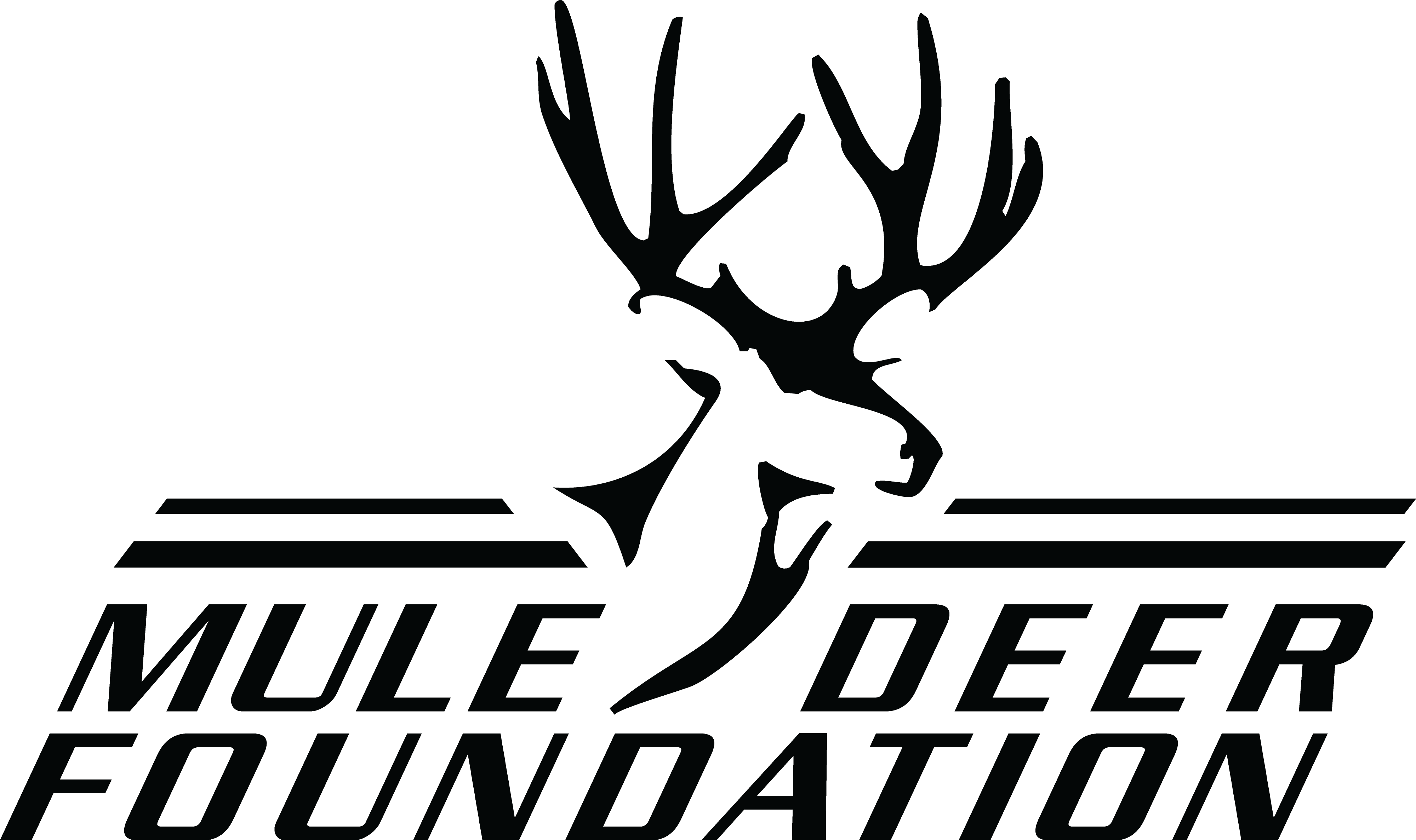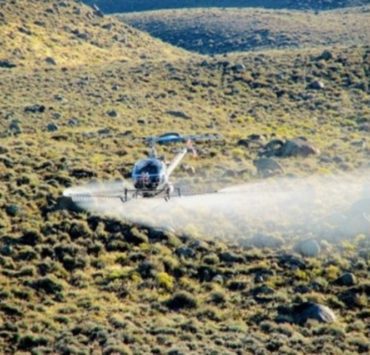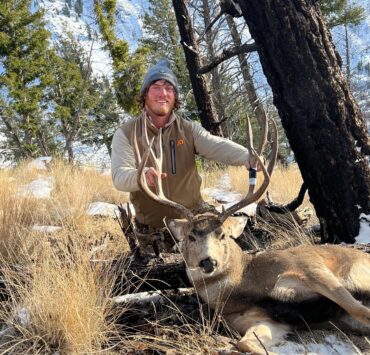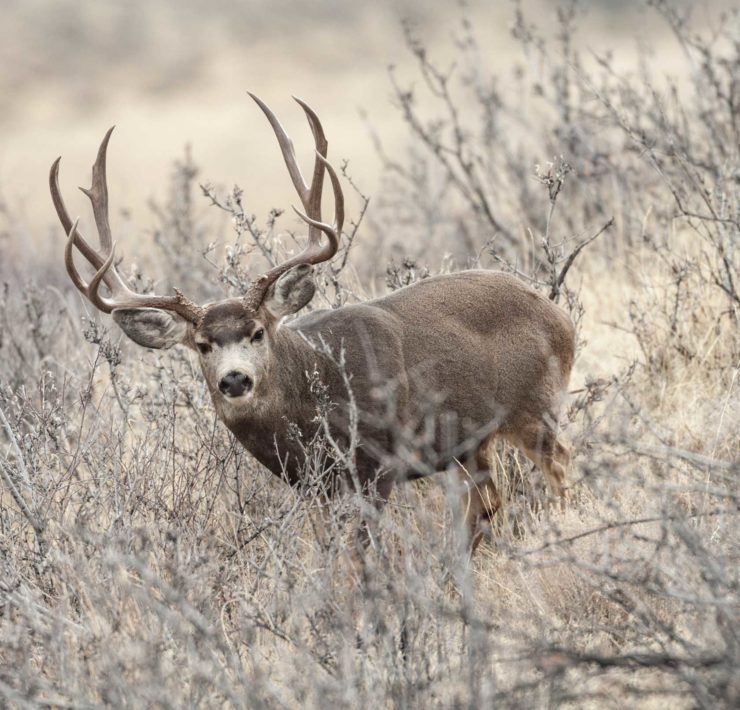Whaleback Fire Forest Restoration Project
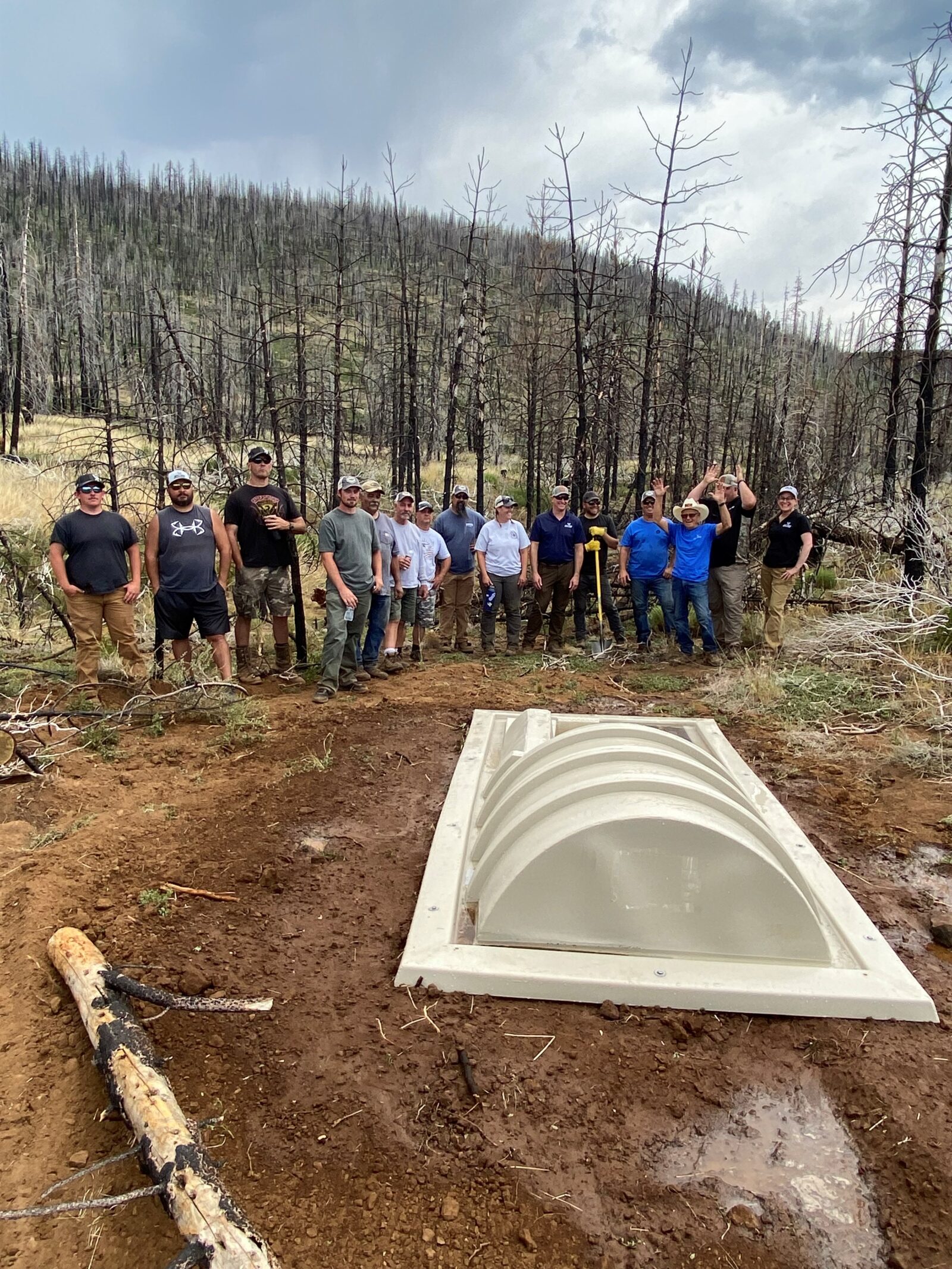
The Mule Deer Foundation is the only conservation group in…
The Mule Deer Foundation is improving water and forage availability for deer and other wildlife through a stewardship agreement with the Lassen National Forest
We’ve all heard of the big wildfires in recent years. These intense fires torch trees and sterilize soils on huge swaths of the western landscape. California alone had almost 9 million acres burned over the last five years. Stand-replacing fires can burn so hot that all the trees and vegetation are killed along with the seeds necessary for natural regeneration.
But not every fire is hundreds of thousands of acres and not all fires burn near residential areas. Often when this happens, we might not even hear much about it and think that nature will just run its course and things will quickly go back to normal. Such is the case with the Whaleback fire that burned 18,703 acres in the Lassen National Forest, 20 miles northwest of Susanville, California.
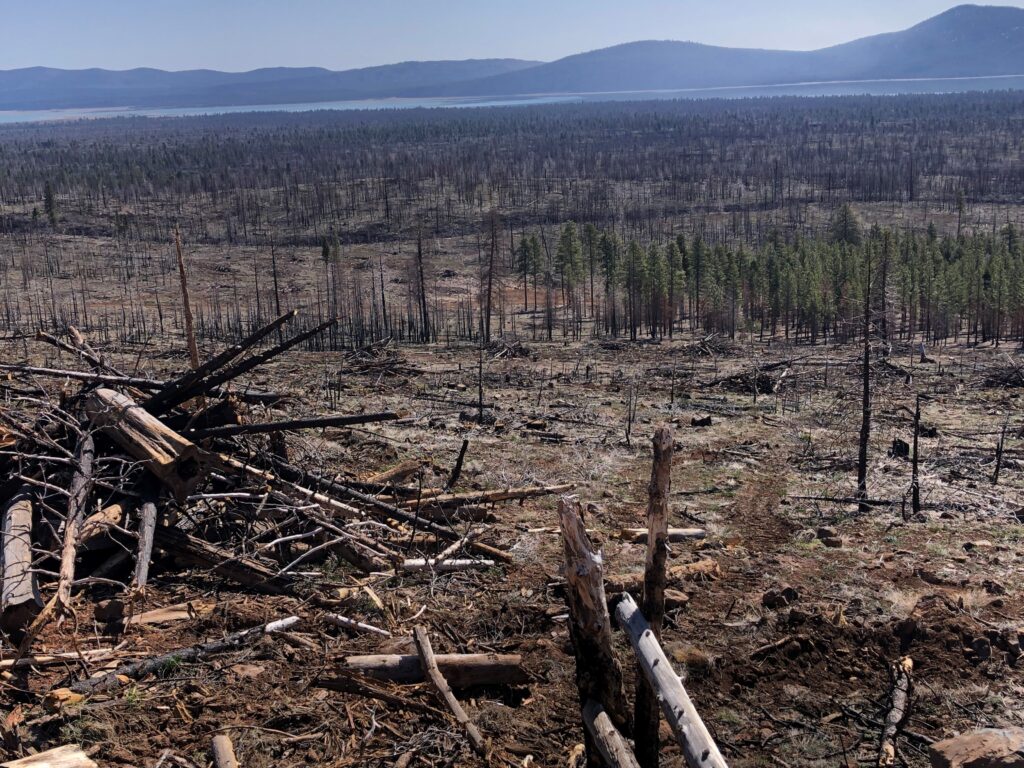
The Whaleback fire was a stand replacing, high intensity event and natural regeneration of the area would take decades to even begin getting the area on the road to recovery. To kick start the reforestation and post-fire restoration efforts, the U.S. Forest Service (USFS) has an effective tool in their toolbox—partnering with organizations through stewardship agreements that help address the massive backlog of projects that need to be undertaken to either prevent fires or to restore forests in the wake of a fire.
Wildfires obviously impact wildlife habitat, and it is logical that conservation organizations that work to sustain wildlife populations are partnering with the USFS to help with pre- and post-fire restoration projects across the West. The Mule Deer Foundation (MDF) is one of those partners and has numerous agreements with the USFS throughout the West, including a master stewardship agreement with the USFS Pacific Southwest Region that covers most of California. Subsequently, MDF has a local project agreement, called a Supplemental Project Agreement (SPA), with the Lassen-Eagle Lake District near Susanville, CA. In the Whaleback burn scar, MDF partnered with the USFS to complete various activities within the SPA to accelerate reforestation efforts and replace deer habitat that was lost.
Lassen National Forest staff including the forester/silviculturist and wildlife biologist evaluated the Whaleback burn area to determine the best places for forest restoration based on soil quality, topography, former timber cover, and other factors. By identifying these key areas, the restoration process can be targeted where it has the best likelihood to provide the maximum benefit. With so many fires and limited resources and budgets, reforestation efforts can rarely restore the entire burned area, but restoration in key locations can help kickstart the natural regeneration process.
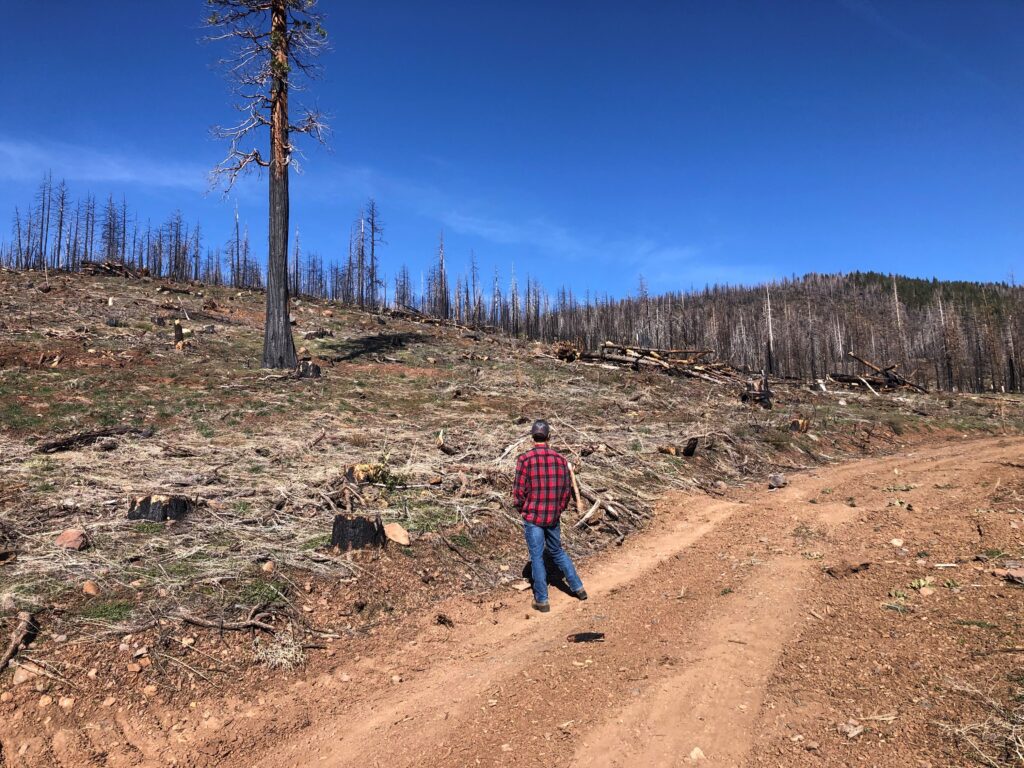
“There are so many fires, and they are burning so hot that these reforestation projects are critical,” notes Randy Morrison, California habitat partnership coordinator for MDF. “Natural regeneration isn’t happening and would take a century or more to begin getting back to the forest that we knew. If we can work together with the Forest Service through these stewardship agreements, we can get the reforestation process started and at a faster pace which will lead to better habitat conditions and will have mature trees on the landscape again in less time.”
In the first phase, MDF crews conducted a 544-acre site preparation project in summer 2022 that cleared the forest floor of downed trees and cut standing dead trees. Safety was a huge issue for workers and the public, so MDF hired a tree feller to cut hazard trees, improving access on more than nine miles of access roads. The acres that were cleared are now ready for reforestation in 2024 when seedlings grown from nearby seed sources are old enough to plant.
As part of the stewardship agreement, MDF brings “match” funding or volunteer hours to help cover a minimum 20% of the overall cost. The Whaleback fire project agreement calls for part of MDF’s match to replace five wildlife water tanks, also known as guzzlers, that were burned in the fire. In July 2022, the organization partnered with the Boone and Crockett Club and Bass Pro Shops & Cabela’s Outdoor Fund to replace the first two guzzlers in a volunteer project that brought together 25 volunteers and staff, including members from three different MDF chapters in Redding, Quincy, and Susanville.
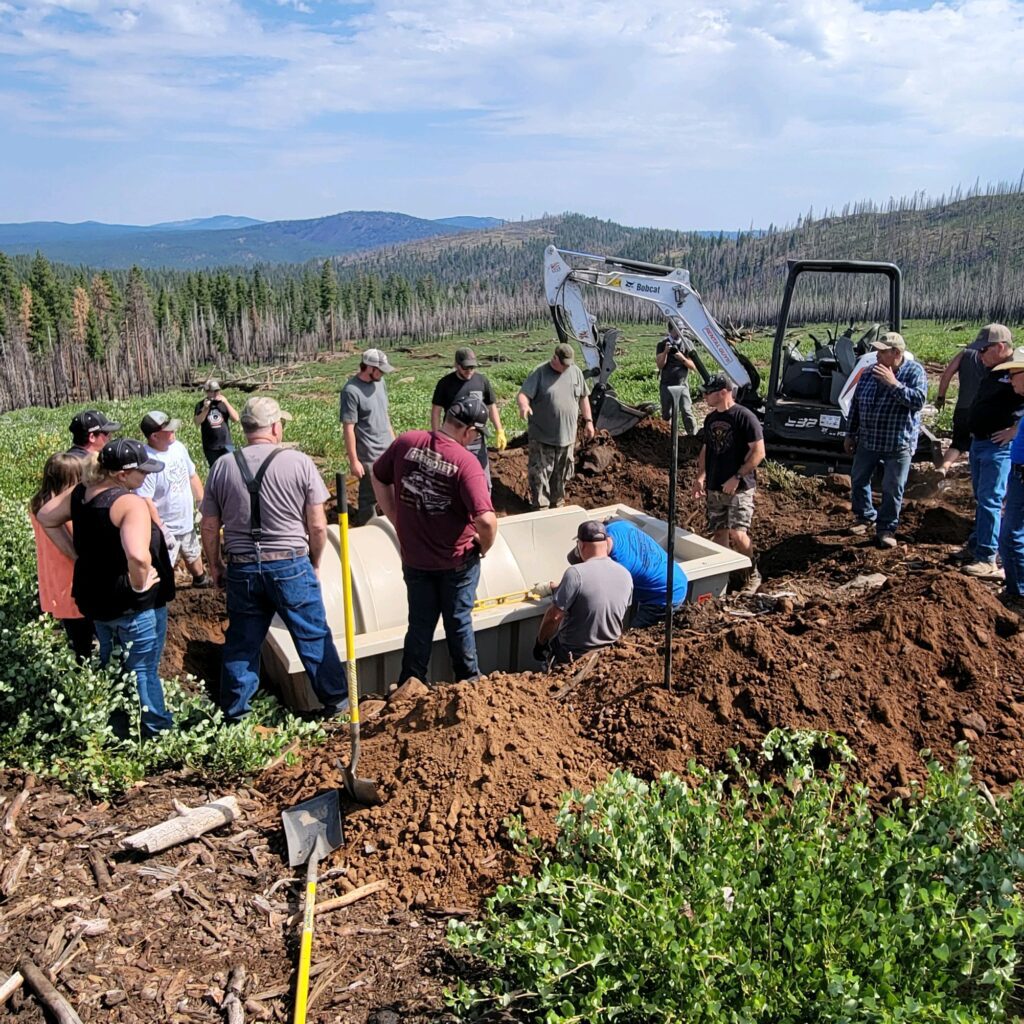
The guzzlers were placed strategically within the burn scar to help distribute the 1,500-deer herd more evenly across the landscape to utilize the available water and forage. These locations were also chosen to reduce deer from crossing a local highway to get to water, which reduces the risk of animals getting hit by vehicles. Since the guzzlers were put in, they are being heavily used by mule deer and many other wildlife species.
After installation, each guzzler had 1,000 gallons of water added, however the design of the tanks allows them to collect natural precipitation so they will continue to provide access to water. In the coming months, a smaller team will be going back to the project location to build wildlife friendly fencing around the water sources that will allow wildlife in but restrict use by livestock to ensure the guzzlers aren’t overused. MDF volunteers will also be installing the additional three guzzlers included within the agreement.
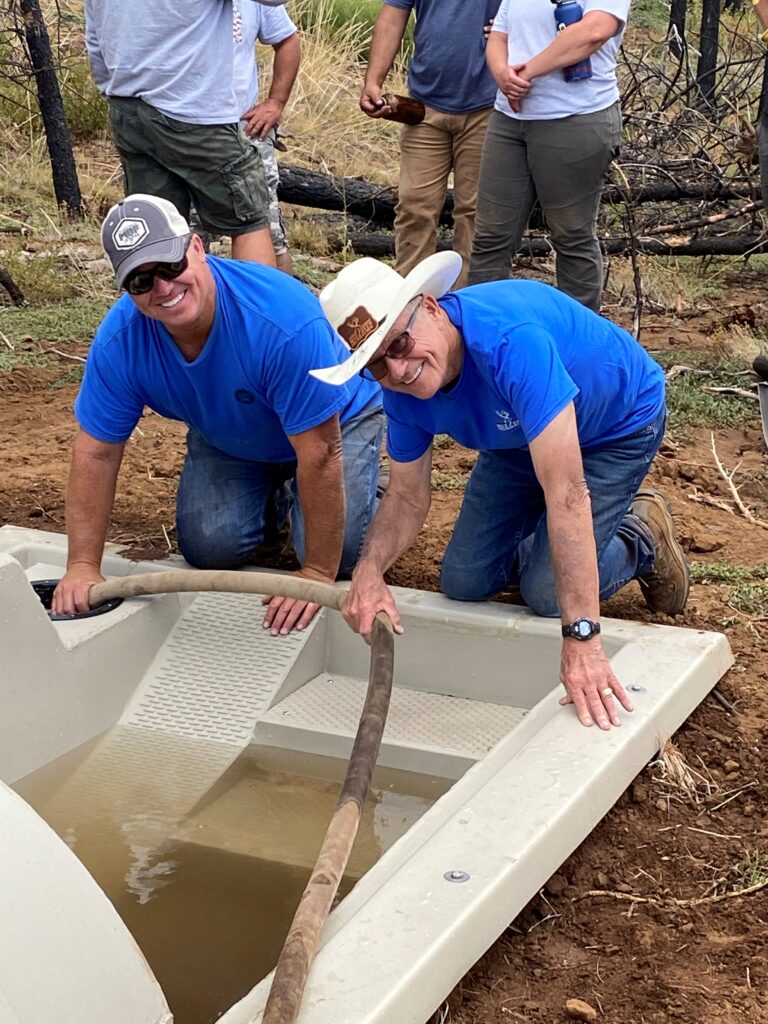
Next year, MDF will be conducting a 200-acre meadow restoration project a few miles outside of the burn scar, removing conifers that are encroaching into the meadow. Wet meadows are extremely valuable to deer and other wildlife and when trees begin to take over, they can restrict the growth of the shrubs and grasses in a meadow that provide the most nutritious forage for deer and other wildlife. When hot fires destroy vegetation, animals take advantage of nearby unburned areas making it even more important that these meadows can handle the heavier use.
With more fires burning hotter than ever, partners need to work together to help reduce the threat of catastrophic wildfires—and work together to restore the landscape when a fire does occur. Stewardship agreements for reforestation and habitat enhancements that can get projects on the ground faster are a tremendous tool to managing our national forests more effectively. New investments through federal infrastructure funding will help target even more resources to implement these projects.
MDF has prioritized wildfire prevention and restoration and is partnering with federal and state agencies to help stem the tide of habitat loss and replace losses more quickly. Hopefully within the next decade we will see the results of this proactive forest management that is good for forests, good for wildlife, and good for the communities nearby.
The Mule Deer Foundation is the only conservation group in North America dedicated to restoring, improving and protecting mule deer and black-tailed deer and their habitat, with a focus on science and program efficiency. MDF is a strong voice for hunters in access, wildlife management and conservation policy issues. MDF acknowledges regulated hunting as a viable management component and is committed to recruitment and retention of youth into the shooting sports and conservation. Get involved in your state or become a member at www.muledeer.org or call 1-888-375-3337.


